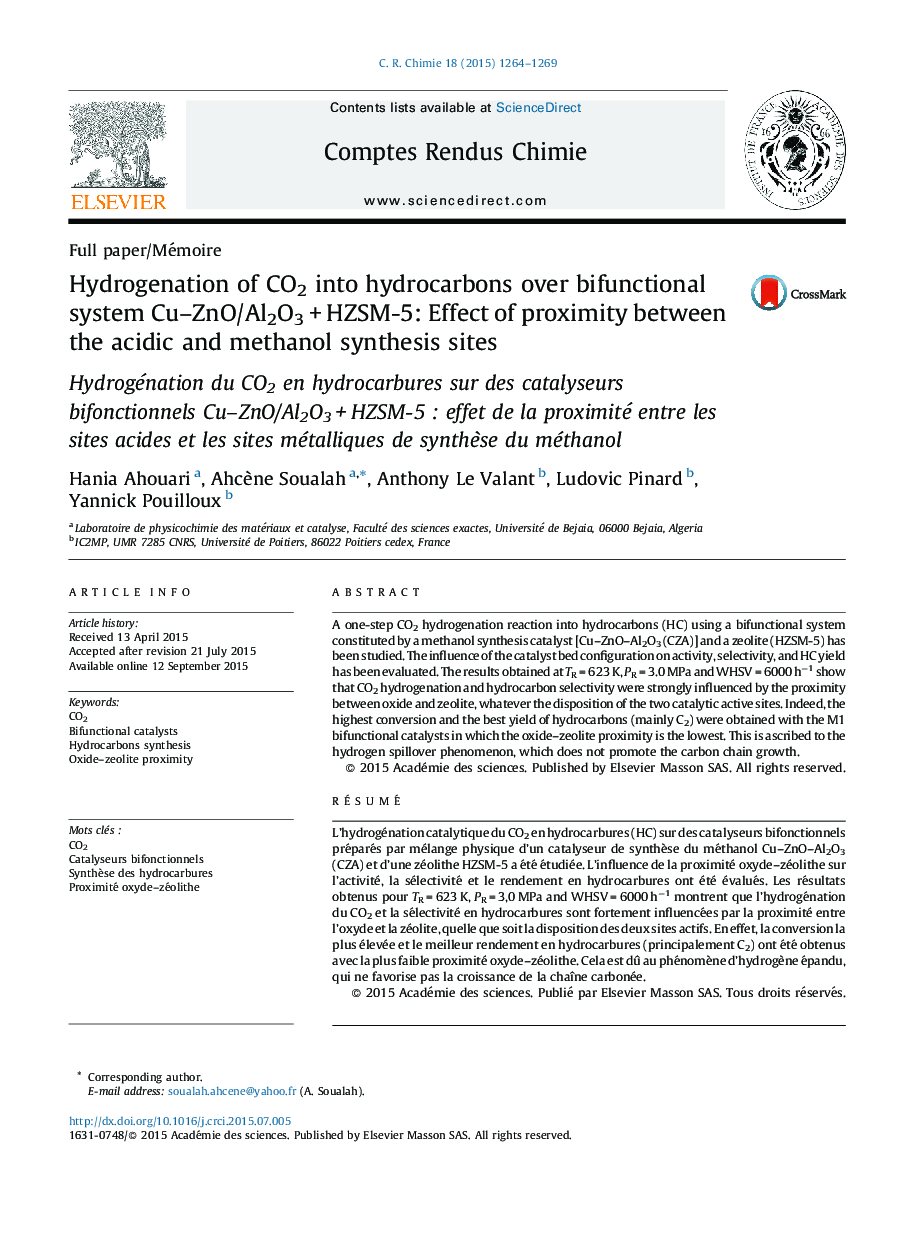| کد مقاله | کد نشریه | سال انتشار | مقاله انگلیسی | نسخه تمام متن |
|---|---|---|---|---|
| 170239 | 458380 | 2015 | 6 صفحه PDF | دانلود رایگان |

A one-step CO2 hydrogenation reaction into hydrocarbons (HC) using a bifunctional system constituted by a methanol synthesis catalyst [Cu–ZnO–Al2O3 (CZA)] and a zeolite (HZSM-5) has been studied. The influence of the catalyst bed configuration on activity, selectivity, and HC yield has been evaluated. The results obtained at TR = 623 K, PR = 3.0 MPa and WHSV = 6000 h−1 show that CO2 hydrogenation and hydrocarbon selectivity were strongly influenced by the proximity between oxide and zeolite, whatever the disposition of the two catalytic active sites. Indeed, the highest conversion and the best yield of hydrocarbons (mainly C2) were obtained with the M1 bifunctional catalysts in which the oxide–zeolite proximity is the lowest. This is ascribed to the hydrogen spillover phenomenon, which does not promote the carbon chain growth.
RésuméL’hydrogénation catalytique du CO2 en hydrocarbures (HC) sur des catalyseurs bifonctionnels préparés par mélange physique d’un catalyseur de synthèse du méthanol Cu–ZnO–Al2O3 (CZA) et d’une zéolithe HZSM-5 a été étudiée. L’influence de la proximité oxyde–zéolithe sur l’activité, la sélectivité et le rendement en hydrocarbures ont été évalués. Les résultats obtenus pour TR = 623 K, PR = 3,0 MPa and WHSV = 6000 h−1 montrent que l’hydrogénation du CO2 et la sélectivité en hydrocarbures sont fortement influencées par la proximité entre l’oxyde et la zéolite, quelle que soit la disposition des deux sites actifs. En effet, la conversion la plus élevée et le meilleur rendement en hydrocarbures (principalement C2) ont été obtenus avec la plus faible proximité oxyde–zéolithe. Cela est dû au phénomène d’hydrogène épandu, qui ne favorise pas la croissance de la chaîne carbonée.
Journal: Comptes Rendus Chimie - Volume 18, Issue 12, December 2015, Pages 1264–1269